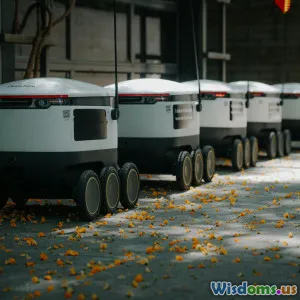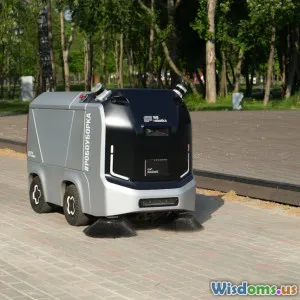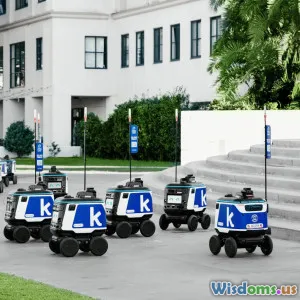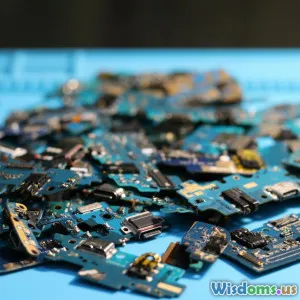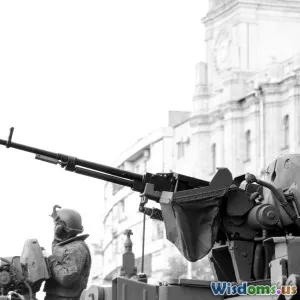
Are Autonomous Tanks Ready to Replace Human Crews
7 min read Explore the advancements, challenges, and future of autonomous tanks replacing human crews in modern warfare. (0 Reviews)
Are Autonomous Tanks Ready to Replace Human Crews?
In the evolving landscape of military technology, the tank has remained a symbol of armored power since its first appearance in World War I. Fast-forward to the 21st century, autonomous vehicles have begun reshaping many sectors—but are autonomous tanks truly ready to replace human crews on the battlefield? This is no longer science fiction but a pressing reality with profound tactical, ethical, and technological implications.
Introduction: The Rise of Machine-Driven Warfare
Unmanned vehicles already dominate the skies and seas of modern conflict zones, from drones conducting precision strikes to autonomous underwater vehicles executing reconnaissance missions. Ground forces, however, face unique challenges, especially when it comes to armored systems like tanks. These vehicles operate in complex, dynamic environments demanding rapid decision-making, interpretation of ambiguous data, and teamwork among crew members.
Recent breakthroughs in artificial intelligence (AI), robotics, and sensor technologies now make it feasible to envision tanks operating with minimal or no human intervention. But how close are we to fully autonomous tanks? And what stands in the way?
Technological Foundations of Autonomous Tanks
AI and Machine Learning in Combat Vehicles
State-of-the-art AI algorithms enable tanks to perform many tasks previously dependent on human intuition and experience. Neural networks trained on battlefield data allow autonomous tanks to identify threats, navigate terrain, and engage targets with high precision.
For example, the U.S. Army’s Robotic Combat Vehicle (RCV) program demonstrates prototypes capable of convoy operations and scouting while communicating with manned units. Similarly, Russia’s Uran-9 unmanned ground vehicle, equipped with a turret and multiple weapons systems, offers practical insights into integrating autonomous control with firepower.
These vehicles incorporate multiple sensors—including LIDAR, radar, infrared cameras, and acoustic arrays—to create a comprehensive situational awareness that rivals human cognition in certain aspects.
Navigation and Terrain Challenges
Ground vehicles confront unpredictable terrain: rocky landscapes, urban environments with narrow alleys, or forested areas obscuring line-of-sight. Autonomy demands real-time processing of sensor data to navigate hazards and maintain mission objectives.
Advances in Simultaneous Localization and Mapping (SLAM) and advanced path-planning algorithms enable autonomous tanks to plan routes and adapt on the fly.
Tactical Advantages and Operational Considerations
Increased Operational Endurance and Safety
Unlike human crews, machines do not suffer fatigue, fear, or the psychological strain of combat, allowing autonomous tanks to operate longer and in riskier environments. This quality potentially reduces human casualties by taking soldiers out of the line of fire.
Furthermore, the ability to swarm or coordinate in groups across a digital battlefield could overwhelm adversaries with speed and precision.
Limitations in Complex Decision-Making
Despite impressive technology, machine decision-making continues to struggle with the subtlety and nuance of some battlefield situations. Identifying non-combatants, interpreting enemy intent, and responding to unexpected events in ways that align with rules of engagement remain key hurdles.
It’s worth noting the example of the South Korean K21 Infantry Fighting Vehicle, which retains a human commander onboard precisely because autonomous systems still require human judgement in intricate tactical contexts.
Ethical and Legal Challenges
The prospect of autonomous tanks raises critical questions about accountability and the laws of armed conflict. Who is responsible if an autonomous system mistakenly targets civilians? Can principles of proportionality and distinction in warfare be encoded reliably?
AI ethicist Stuart Russell asserts, "Human control and oversight are essential to preventing unwanted escalations or mistakes in autonomous weapon systems." International debates continue under various arms control forums like the United Nations Convention on Certain Conventional Weapons (CCW), seeking to frame clear constraints.
The Human-Machine Teaming Future
Given the current state of technology and ethical considerations, fully autonomous tanks replacing human crews wholesale is unlikely within the next decade. Instead, the near future points to hybrid models where human operators supervise semi-autonomous vehicles, intervening when nuanced judgement is necessary.
Examples of Human Supervisor Models
- MUM-T (Manned-Unmanned Teaming): Human tank crews cooperating with autonomous scout vehicles to increase battlefield awareness.
- Remote Operation: Operators controlling autonomous tanks from safe distances, reducing manpower risk without fully surrendering decision-making.
Research highlights that human-machine collaboration enhances performance beyond what humans or machines can achieve alone.
Conclusion: A Transforming Battlefield—but Not a Fully Automated One Yet
Autonomous tanks hold the promise of revolutionizing land warfare—offering speed, safety, and tactical innovation. However, technical complexities, unpredictable environments, and profound ethical challenges currently prevent them from completely replacing human crews.
Instead, the future of armored warfare likely rests in integrated human-machine teams where artificial intelligence supports and augments human decision-making, rather than replacing it outright.
As AI and robotics evolve, continuous dialogue among technologists, military strategists, ethicists, and policymakers will be crucial. The question of readiness is not only about the machines themselves but also about how prepared societies are to integrate them responsibly.
Military pioneers who balance innovation with prudence may usher in a new era where autonomous systems enhance battlefield effectiveness while preserving essential human judgment and ethical standards.
References
- U.S. Army Robotic Combat Vehicle (RCV) Program, Army.mil
- Overview of Uran-9 Unmanned Ground Vehicle, Jane's Defense Weekly, 2023
- Stuart Russell, "Human Compatible: Artificial Intelligence and the Problem of Control", 2019
- UN Convention on Certain Conventional Weapons (CCW) documents
- Analysis of MUM-T capabilities, Defense Advanced Research Projects Agency (DARPA) publications
Rate the Post
User Reviews
Popular Posts











